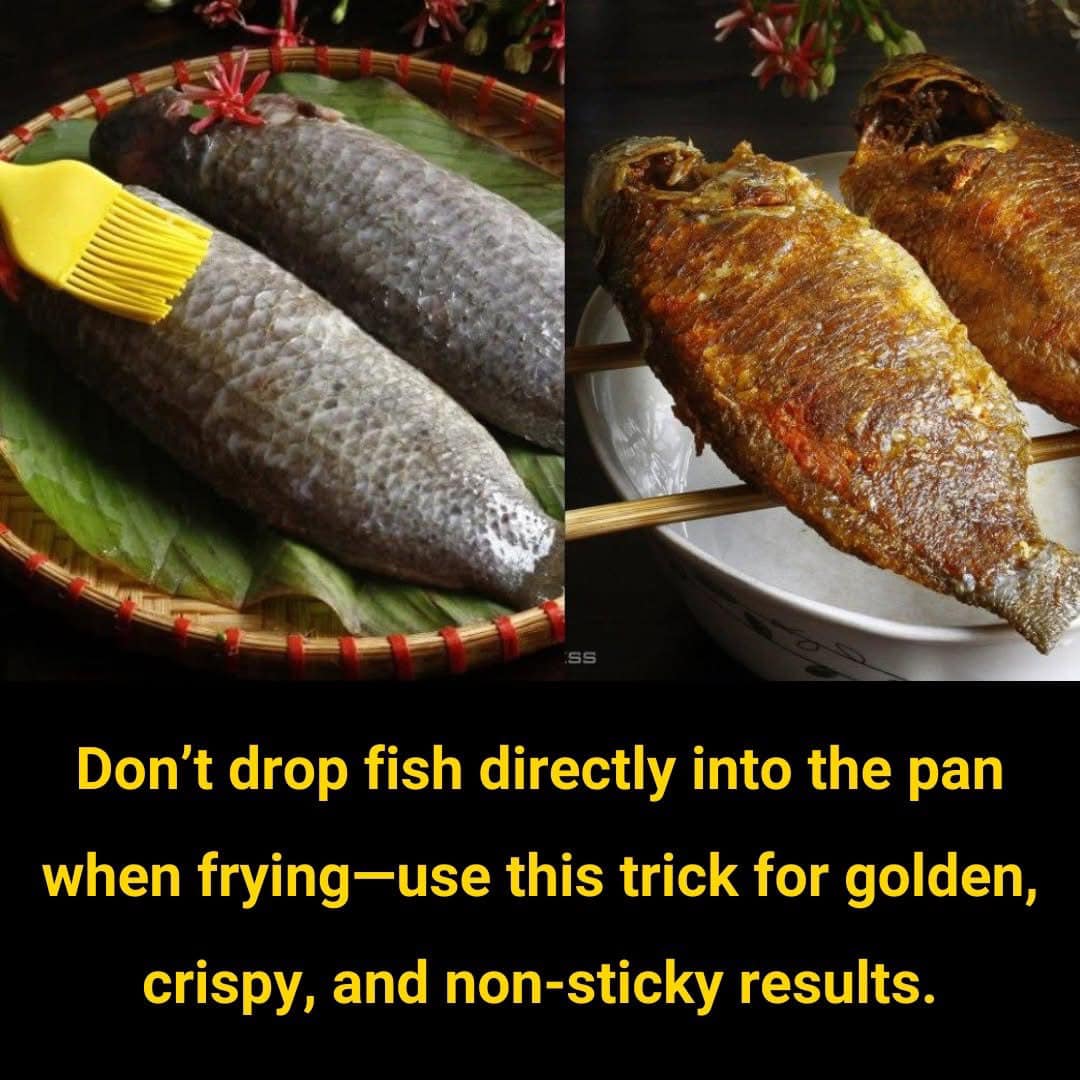ADVERTISEMENT
### The Right Way to Prepare Fish for Frying
Now that you understand the potential pitfalls, here’s how to properly prepare fish for frying:
#### 1. **Pat the Fish Dry**
The first and most important step is to **pat the fish dry** with paper towels. Fish, especially fatty fish like salmon or cod, contain moisture that can cause the oil to splatter if not properly dried. Excess moisture also prevents the fish from crisping up as it should. Make sure both sides of the fish are dry to the touch before frying.
#### 2. **Season the Fish**
Before frying, season your fish with salt, pepper, or other spices and herbs of your choice. This helps to enhance the natural flavor of the fish and creates a more even, flavorful crust once fried. You can also add a light dusting of flour or cornstarch at this stage to promote crispiness.
#### 3. **Coat with a Batter or Breadcrumbs**
For extra crispiness and protection from the pan, consider coating the fish with a batter or breadcrumbs. This creates a barrier that prevents the fish from sticking to the pan and provides a delicious, golden, crispy exterior.
– **Batter**: Make a simple batter with flour, egg, and a bit of water or milk. This will help the fish retain moisture inside while creating a crunchy coating outside.
– **Breadcrumbs**: Dipping the fish in breadcrumbs or panko breadcrumbs gives it a crunchy texture when fried. You can also season the breadcrumbs with herbs, garlic powder, or cheese for extra flavor.
#### 4. **Preheat the Pan and Oil**
Always **preheat your pan** before adding the fish. A properly heated pan ensures even cooking and prevents sticking. Add enough oil to coat the bottom of the pan—around 1/4 to 1/2 inch deep—depending on the thickness of the fish you’re frying. The oil should be hot (but not smoking) before you add the fish. A good test is to dip the edge of a piece of bread or a wooden spoon into the oil; if it sizzles immediately, the oil is ready.
#### 5. **Use a Non-Stick Pan or Cast Iron Skillet**
Using the right type of pan can make a significant difference in the outcome. A **non-stick pan** or **cast-iron skillet** is ideal for frying fish because they provide an even heat distribution and prevent the fish from sticking. Make sure the pan is preheated and that there’s enough oil to coat the bottom to create a crispy, golden exterior.
#### 6. **Fry in Batches**
Avoid overcrowding the pan. Fry your fish in **small batches**, especially if you’re cooking multiple pieces. This gives each piece enough space to cook evenly and prevents the temperature of the oil from dropping too much, which can result in soggy fish.
#### 7. **Flip Carefully**
When it’s time to flip the fish, use a **spatula or tongs** to handle it gently. Wait until the fish is golden brown on one side before flipping. If you try to flip it too soon, it may stick to the pan. Let the fish cook until it’s easy to lift with your spatula.
#### 8. **Drain the Fish**
Once the fish is fried to golden perfection, remove it from the pan and place it on a plate lined with paper towels to drain any excess oil.
### Tips for Perfectly Fried Fish
– **Choose the right fish**: Some fish work better for frying than others. Firm fish like cod, haddock, or tilapia hold up well during frying, while delicate fish like flounder or sole can be more challenging to fry.
– **Maintain the oil temperature**: Keep the oil temperature steady, ideally between 350°F to 375°F. If the temperature is too low, the fish will absorb too much oil and become greasy. If it’s too high, the outside will burn before the inside cooks through.
– **Serve immediately**: Fried fish is best enjoyed fresh and hot. Serve it with your favorite sides like fries, slaw, or a simple salad.
### Final Thoughts
Frying fish might seem simple, but there are a few key steps that can make all the difference in achieving crispy, golden perfection. By taking the time to properly prepare your fish—drying it, seasoning it, and coating it—you’ll avoid common mistakes like sticking, sogginess, and uneven cooking. With these tips, you can fry fish that’s not only tasty but also visually appealing, making it a perfect addition to any meal.
So, next time you fry fish, skip the direct-to-pan approach and follow these simple steps to enjoy a perfectly crispy, flavorful result every time!
ADVERTISEMENT
